8 1960s Classics With Faces We Can’t Help but Love
We blame the weather. While the staff of this website calls many places in the United States (and overseas) home, the lion’s share of our editors are located somewhere in the Midwest. And right now, dear reader, the Midwest weather is volatile as hell.
Naturally, we turned to internal discussions about cars to cope with a week where temperatures fluctuated by as much as 50 degrees and weather patterns swung from rain to sun to snow and back again.
This time around, we got to talking about the ’60s, one of our hobby’s indisputable golden eras. That led to discussions about front-end design, and how radically different it was from automaker to automaker. In short order, many of us began campaigning for certain cars with front ends that stuck in our hearts and minds, for one reason or another.
Compiled here is a list of eight such cars. Beneath each nominee is a brief summary of why it warrants appreciation, made by each car’s loudest proponent in the (chat)room.
Rules? Delightfully few. The car had to be built at some point in the ’60s, and beyond that, it was up to each of us to make the case. Naturally, such a loose mission brief will have let many great cars slip through the cracks. Got one that should have made this list? Let fly in the comments below!
1968 Chevrolet El Camino
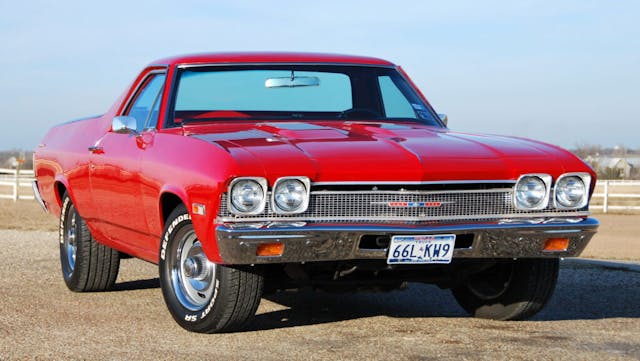
If your first thought was that the face of the ’68 ElCo is virtually the same as that of the Chevelle, allow our own Cameron Neveu to offer the most compelling—if a bit unorthodox—case for picking the former:
“Why the El Camino over the identical appearing 1968 Chevelle? Well, the ElCo front end looks even sweeter knowing you’ve got a bed out back.”
An open and shut case, in our eyes. The 1968 model’s four round headlights make it extra distinct, and while the performance fan in us enjoys the SS badge between those four eyes, there’s something about the long, horizontal Chevy emblem that we can’t resist.
1968 Citroën DS

The DS pops up in all sorts of design lists, and for good reason. Those swooping body lines were quite brave for the era, and who could forget the high-tech hydraulic suspension that gave the car a magic carpet-like ride, helping to accentuate the design details that seemed to float over the blacktop? But the nose is worth celebrating on its own. As U.K. correspondent Nik Berg reminded us, if you sound out the DS title with a thick enough French accent, you’ll hear “Deésse,” which just happens to be French for “goddess.”
The big, wide headlights at either corner, contrasted with the waterfall of the hood in the middle, the exceedingly convex chrome bumper, and the lack of a grille make this front end as striking as they come.
1965 Buick Riviera
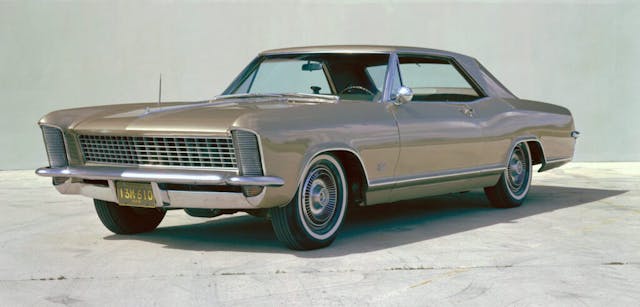
If the front end of a car were to be described as “very Teddy Roosevelt-esque,” could you picture it? In a single sentence, Eddy Eckart swayed the jury in his favor: “Simple, and formal in a means business kind of way, all without being too assertive.”
Gaze upon the forward cant of those headlamps; marvel at the buttresses flanking the massive hood. “The Riviera looks like a concept car that actually made it to production,” added Brandan Gillogly. There’s a reason this car is a popular choice for custom builders and restomod specialists, and it has everything to do with how the Riv’ manages to speak softly, while … well, you know the rest.
1966 Alfa Romeo Giulia Duetto Spider
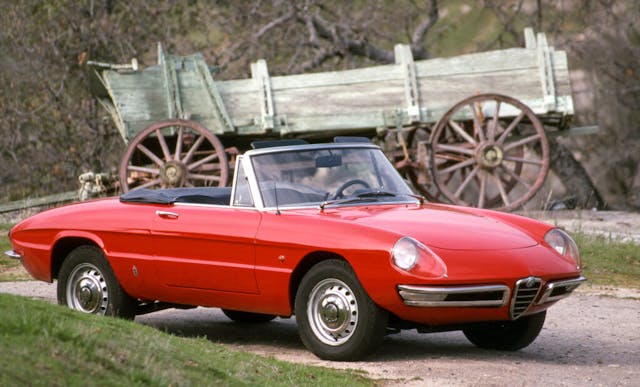
If the Riviera is an American sledgehammer, Stefan Lombard nominated a delicate Italian pickaxe to contrast it. While it’s hard to find a bad angle of the Giulia Duetto Spider, the car’s clean, simple face manages to avoid the “mouth-agape fish” look that so many small cars of the time suffered from.
He also noted that while many cars look great from a front 3/4 angle, it can be harder to make the head-on view sing. In the Duetto’s case, Lombard had this to say: “The sloping nose and covered headlights lead into that delicate V grille, which flows back beneath the car. I love it.” Hard to argue with that!
1969 Chevrolet Corvette
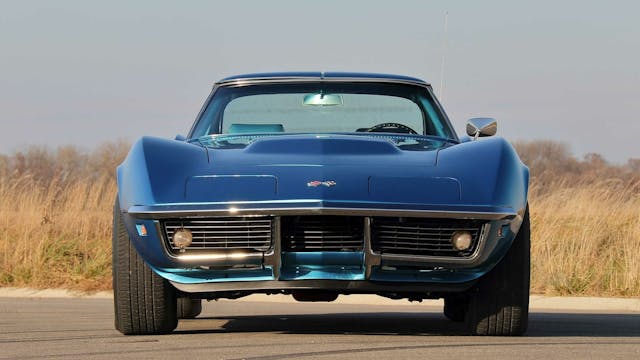
The chrome front bumper the third-gen Corvette stuck around through 1972, but since the design debuted in 1968, it counts. Resident Corvette fanatic Grace Houghton opted to shout out the 1969 model, and we didn’t need any additional convincing. Two beautifully high fenders dip down to a broad chrome bar that spans the width of the car’s face. Below the bumper, two rectangular inlets, each housing a round turn signal bulb. The look, as Houghton so eloquently put it, “manages to look muscular and delicate at the same time … So Mako Shark, and so good.”
Bonus points if we’re looking at a ’69 L88, with its massive hood bulge shrouding a 427 big-block.
1969 Ford Mustang Mach 1

Though it’s easy to blur the lines, it bears repeating that “muscle cars” and “pony cars” were not always the same things. When it debuted in April of 1964, the Mustang was a relatively docile thing. The front end might be famous now, but that has more to do with what the Mustang has become in automotive culture than it does with how it looks on its own.
That look began to change almost immediately, as our resident Ford guru Sajeev Mehta reminded us. By 1969, the Mustang’s face had gone from cheerful companion to something far more sinister. As Mehta put it: “The 1969 Mustang took the hum-drum front end of the 1965 model and made it deeper, more aggressive, and far more angry. It became half muscle car and half pony car.”
1963 Studebaker Avanti
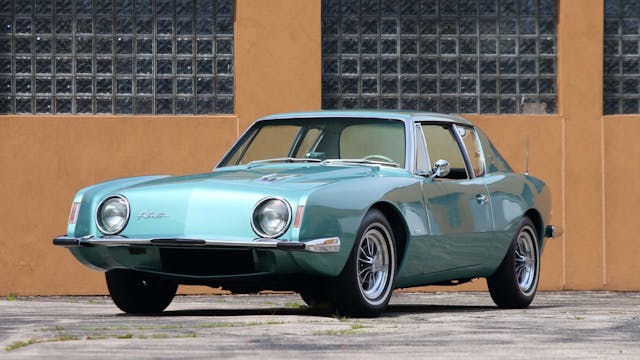
Though I’ll admit it’s not my favorite front end from the 1960s, there’s something distinctive and instantly recognizable about the Studebaker Avanti that warrants respect. Those perfectly round headlights seem like they should flank a broad grille, but instead, it’s just solid bodywork. That decision highlights the offset futuristic-script “Avanti” emblem that proudly proclaims the model’s identity. The fenders end in sharp corners, framing the simplicity of the grille-less countenance. You can’t help but appreciate designer Raymond Loewy’s flair for the dramatic.
“Counter-point, there should be a grille between this headlights and this nominee is actually bad.” – Stefan Lombard
Well, that’s just like, your opinion, man.
1968 Dodge Charger R/T
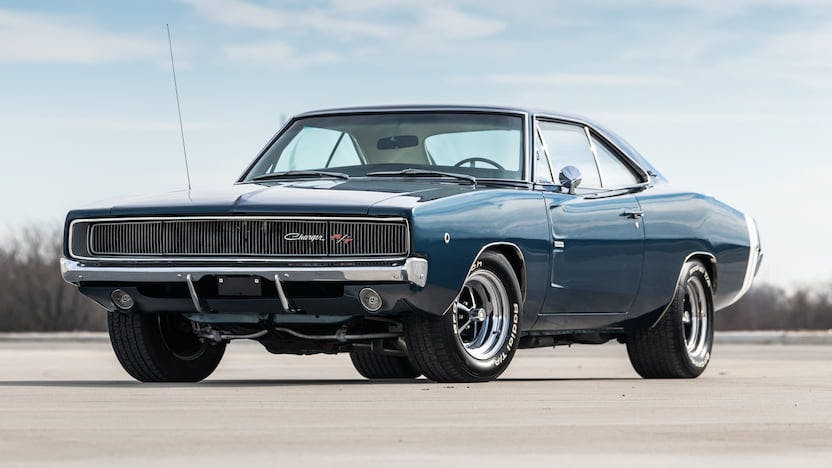
Fret not, Mopar fans, our site’s executive editor has you covered. Eric Weiner was swift and decisive with his nominee, the ’68 Charger. That broad, mail-slot rectangle of a grille is immediately recognizable. Hidden headlights add a menacing tone to the front end, and this is one of the few cars that makes a large front overhang look attractive.
This rectangular motif also carries over onto the new Dodge Charger. Anytime a front end’s design elements can look attractive in two distinctly different eras, you know you’ve got a winner in your hands.
***
Check out the Hagerty Media homepage so you don’t miss a single story, or better yet, bookmark it. To get our best stories delivered right to your inbox, subscribe to our newsletters.
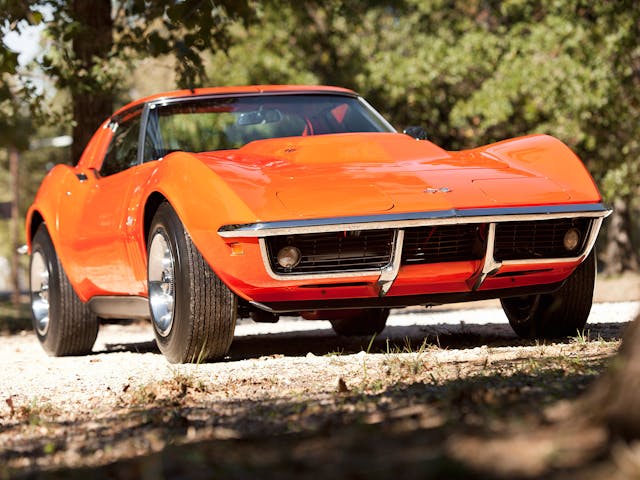


Why just Elcamino. How about a Chevelle that was identical?
Better yet how about a 68 GTO with the Endura nose and hide aways. That was the first use of the nose like that on a car that became the future.
Or how about a 69 Camaro RS SS. Sweet looks.
Citroen was not a love. Compare it to a XKE with the covered headlamps.
I bought new a ’69 SS 396 Chevelle $3150. I was sorry I went cheap and didn’t get air. It would have been about $3400 then. I thought of the Chevelle’s it had the best looking front end. I hated those wide bias tires, If the road got damp it was sliding all over the place. I can’t think of the name of the ’66-’67 Cadillac, that were really good looking. I think it came as only a two door hardtop. Especially, that metal flake root beer color. I had a ’66 Corvette painted that color, it was beautiful.
Loren, maybe you’re thinking of the front wheel drive 1967 Cadillac ElDorado? 1966 Eldorado was still built on the rear wheel drive full size platform.
I have to admit that I’m pleased to see the El Camino get some love, but I agree with everything @hyperv6 posted.
Let the haters start. ’69 Camaro lost any edginess and curvaceuosness of the ’67-68’s. It was fat and the headlight louvers were not pretty. Gimme a ’67 SS ANYTIME…
Fun article and a great list plus many good comments.
The 63 Riviera evolved into perfection with the 65 frontend, topping this list!
The 3rd Gen Vette was so much better in the early 70’s that it should have been left off this list. In its place instead, the midyear Corvette, the pinnacle of 1960’s automotive design!!!
Impossible to argue with a ’65 Riv – case closed.
If the ’65 Riviera *hadn’t* been on this list I would’ve cried “foul”.
…Very loudly!
🙂 🍺
Never like the Gen 1 Riv; too bloated and blingy for my taste. ’63 Gran Prix, now…!!
Ditto on the Riviera!
Beautiful face, but, as a supplier, my Dad bought one of the very first Riviera’s, and it was clearly a Monday car! Poor build quality resulted in multiple trips to the dealer for warranty work.
Amen!
I loved hidden headlights.
BUT…contradiction ahead…
In this case, the lack of lights makes the car look unfinished.
Probably because we got used to the look in 63-64.
Sometimes cleaner isn’t better.
“Sometimes” I’d agree with, but to me in this case “cleaner” is definitely better.
For my money the ’65 Riv is one of the finest automotive designs from any era or locale. Jock Twombley was the designer, but I also consider this car one of Bill Mitchell’s major successes, as he was running GM design at the time and put it forward.
What I didn’t know until I *just now* looked it up is that it was originally designed to be a Cadillac, but Caddy was doing fine and Buick needed the ‘win’, so it went to Buick instead. Since it also got the Nailhead engine, which is among my favorite domestic engines, it’s even better!
The 65 Riv is beautiful but I think it should have been the ’63 Riviera…it started that body style.
Unless it’s a 66 Riviera. LOL
The funny thing about the C3 is that I don’t have a problem with the look of the rubber baby buggy bumper on the front. I like the rear chrome and tail lights on the early C3s though. When the rear bumper on my 74 decomposed, I actually considered reverting to the 73 and earlier rear bumper and light setup, but it would have been a lot more work than I was interested in
No C2 Corvette front end??!!!
Sacrilege!!! One of thee most beautiful with split bumpers flanked by peaked fenders and hideaway headlights.
The C2 will live forever as the last Corvette! I bought it in May 1967 for $3670. A convertible 4 speed, 350 hp! It still sits majestically in my garage. Its history makes the difference!
Denny, it’s awesome that you still have that car!!
Amen! I loved the C2, never was fond of the C3. Loved the 63-65 Rivieras and the 65-68 GTOs.
The 1967 full size Chevy, and most specifically the SS 427 version, has a fabulous and underrated front end.
Agreed. I would add the ‘64 Impala to this list…but I’m prejudiced 😁
Too boxy.
Original Cobra. Surpassed only by the Ferrari Testarosa.
I am partial to the Avanti since my 1967 (with square headlights) is the same color.
How could you leave out 1967 VW?
Those old-fashioned overrider bumpers kind of ruin that front-end for me; the 1968-on look much better and more modern, to me. And actually, if I was going for an older model with overriders, I would pick one of those earlier ones with the covered headlights.
Agreed! The split-window bus did not make the list either and that face seems to be everywhere on t-shirts, stickers, toys, car shows, and commercials.
1961 and 1962 Pontiacs, best that marque ever had
the Avanti can pass as an EV to the new generation without the grill opening, at least that’s a comment I got with mine “What kind of electric car is this? “
Good heavens! Did you slap the idiot?
in the movie Gattaca, they used Avanti’s as futuristic electric cars
67 Mercury Cougar XR7 with the hideaway headlights. I had a 69.
Thank you. Me too
I was thinking this car should have been on the list. I’m more into the American muscle than some of the other import stuff that’s always featured.
Hidden headlights turn my crank. Unnecessary but they are always cool. My 67 cougar had a delayed closing where I would walk away and then point at one then the other as they closed. Cars have gotten so utilitarian these days; I like the extra fun items.
I really like the front clip on my 67 Firebird 400 HT coupe. Great styling era for autos.
I’ll second that one! Mine’s a ’68 though.
67 68 Firebird should be there
Why don’t you stick with all “AMERICAN” cars ?????????
Because there are a lot of beautiful non-American cars, too?
I own a ’69 C3 ragtop (and a half dozen other GM vehicles), I also own a DS (’72.) And a 2CV. And a few other Euro cars…
They’re all incredible in their own way.
Why exclude the vast majority of the world?
Why? There were a lot of good-looking cars made in the world, not just in the USA. Why be jingoistic?
It’s because Hagerty tends to forget that countries other than the US made cars. I should cut them some slack — TWO foreign cars (Citroen and Alfa) made it on this list this time around — that’s 25%! I suspect that most of Hagerty’s editorial staff (and, likely, its customers) prefer American iron. When the headline said “faces”, I figured they would be featuring cars with “eyes” and a “mouth”. I thought for sure I’d see a Jag E-Type, a Mini, a 911…how about an Austin-Healey Sprite? Fiat Dino? 246 Dino? I think they probably should have used the phrase “front end” instead of “face”. The Corvette, Charger, and Riviera are all nice looking cars, but with their concealed headlights, they don’t really HAVE faces.
Good thought! I didn’t think of that. The cars you stated are great!
Short answer, Hagerty sells insurance globally and thus Hagerty Media has an international audience.
Because the best looking cars aren’t neccesarily American.
Thank you Vince, see no reason why the two also ran are in the mix.
It’s interesting that 3 of the 8 have hidden headlights. Another article I remember, perhaps in Car and Driver, lamented that hidden headlights reduced the emotional connection to the car, because of the lack of eyes.
I can’t believe the 1968 Corvette was selected over the 1963 Corvette coupe!
Agree 100%
They both look pretty good to me, just different.
What about the Volvo P1800?
Agree!
Agree! I know it’s a matter of personal taste and opinion, but I really do not like the C3 in any way. I love the C2, but haven’t the slightest interest in C3; walk right past them at shows.
Correct, the most iconic and beautiful car made in America, the C2 Corvettes are not on the list, yet, a Citron is. Something a little off on that one, o.k. really off.